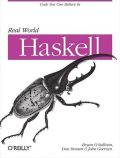In my first of this pair of articles, I laid out some of the qualities I've been looking for in a parsing library.
Before I dive back into detail, I want to show off some numbers. The new Attoparsec code is fast.
What did I benchmark? I captured some real HTTP GET requests from a live public web server, averaging 431 bytes per request. I chucked them into a file, and measured the time needed to parse the entire contents of the file with the following libraries:
Ryan Dahl's http-parser library, which is 1,672 lines of hand-rolled C craziness. I mean "craziness" in a special sort of awed way, with that hushed voice you reserve for the guy who builds the scale model of Neuschwanstein Castle in matchsticks. The library's heritage is closely based on the Ragel-generated parser used by Mongrel. This library is a fair approximation to about as fast as you can get, since it's been tuned for just one purpose. I wrote a smallish, but reasonably realistic, driver program to wire it up to file-based data, adding another 210 lines of code.
An Attoparsec-based HTTP request parser, 54 lines long, with about 30 lines of driver program. (Attoparsec itself is about 900 lines of code.)
Several Parsec-3-based parsers, which are almost identical in length to the Attoparsec-based version.
The Parsec 3 parsers come in three varieties:
The fastest uses a patch that Antoine Latter wrote to switch Parsec 3's internal machinery over to using continuation passing style (CPS). This parser uses
ByteStringfor input, and reads the entire 18.8MB file in one chunk.Next is the same parser, using lazy
ByteStringI/O to read the file in 64KB chunks. This costs about 40% in performance, but is almost mandatory to maintain a reasonable memory footprint on large inputs.In last place is the official version of Parsec 3, reading the input in one chunk. (Reading lazily still costs an additional 40%, but I didn't want to further clutter the chart with more big numbers.)
What's interesting to me is that the tiny Attoparsec-based parser, which is more or less a transliteration of the relevant parts of RFC 2616, is so fast.
I went back and remeasured performance of the Attoparsec and C parsers on a larger data set (295,568 URLs), and got these numbers:
Attoparsec: 2.889 seconds, or 102,308 requests/second
C: 1.614 seconds, or 183,128 requests/second
That clocks the Attoparsec-based parser at about 56% the speed of the C parser. Not bad, given that it's about 3.2% the number of lines of code!
Of course there are tradeoffs involved here.
Parsec 3 emits much more friendly error messages, and can handle many different input types. Attoparsec, being aimed at plumbing-oriented network protocols, considers friendly error messages to not be worth the effort, and is specialised to the arrays of bytes you get straight off the network.
Parsec 3 requires all of its input to be available when the parser is run (either in one large chunk or via lazy I/O). If Attoparsec has insufficient data to return a complete result, it hands back a continuation that you provide extra data to. This eliminates the need for lazy I/O and any additional buffering, and makes for a beautiful, pure API that doesn't care what its input source is.
The memory footprint of the Attoparsec-based parser is small: it will run in 568KB of heap on my 64-bit laptop. The smallest heap size that the Parsec 3 parser can survive in isn't all that much larger: with lazily read input, it will run in a 750KB heap.
Overall, this is yet another instance where a little careful attention to performance yields very exciting results. Personally, I'd be quite happy to trade a 97% reduction in code size for such a small performance hit, especially given the clarity, ease of use, and flexibility of the resulting code. (The http_parser API is frankly not so much fun to use, even though I completely understand the motivation behind it.)



Were their any specific big changes that led to the speed-ups of attoparsec? Or was it just ruthlessly crushing a lot of small things?
Very exciting! When can we expect the new version of the library?
A blog post about how you achieved these great speed-ups would be great!
file FastSet.hs
“For sets of fewer than 32 elements, we test for membership using a binary search.”
but tableCutoff = 8
Probably, sequential search is faster for very small table?